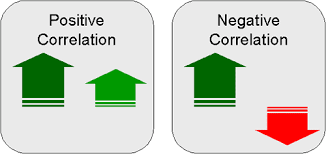Lesson 2: Unique Disorders
| Site: | MoodleHUB.ca 🍁 |
| Course: | Abnormal Psychology 35 RVS |
| Book: | Lesson 2: Unique Disorders |
| Printed by: | Guest user |
| Date: | Thursday, 30 October 2025, 1:14 AM |
Table of contents
- Section/Lesson Objectives
- Introduction
- 1- Dissociative Disorder
- 2 - What is Dissociation?
- 3 - How Does a Dissociative Disorder Develop?
- 4 - What are the Symptoms of a Dissociative Disorder?
- 5 - Who gets Dissociative Disorders?
- 6 - Why are Dissociative Disorders often Misdiagnosed?
- 7 - Do People Actually have Multiple Personalities?
- 8 - Can Dissociative Disorders be Cured?
- 9 - Synesthesia
- 10 - Abnormal Behaviour and the Moon
- 11 - Correlation, Causation and Confounding Factors
- Lesson Review
Section/Lesson Objectives
The student will ...
• Understand and describe the three common childhood disorders discussed in the course.
• Discuss the possible causes of Tourette syndrome, autism, and attention deficit hyperactivity disorder.
• Discuss how dissociative disorders develop
• Explain the unique nature of synesthesia
• State the difference between correlation and causation
• Understand the effects of confounding factors in relationships
• Compare and contrast the various treatment methods discussed in the course
• Understand and describe the concept of perceptual blindness
• List the major mental illnesses that Albertans suffer from and state the prevalence of such illnesses in the general population
Introduction
Although certain mental illnesses are rare in children (e.g., schizophrenia, Munchausen syndrome, delusional jealousy), others are common. Some of these disorders, described in this section, are Tourette syndrome, autism, and attention deficit hyperactivity disorder.
Dissociative Disorder
Recently considered rare and mysterious psychiatric curiosities, dissociative identity disorder (DID), previously known as multiple personality disorder or MPD, and other dissociative disorders are now understood to be fairly common effects of severe trauma in early childhood, most typically extreme, repeated physical, sexual, and/or emotional abuse.
In Diagnostic and Statistical Manual of Mental Disorders-IV (American Psychiatric Association, 1994), multiple personality disorder (MPD) was changed to dissociative identity disorder (DID), reflecting changes in professional understanding of the disorder resulting from significant empirical research.
Post-traumatic stress disorder (PTSD), widely accepted as a major mental illness affecting 8% of the general population in the United States, is closely related to dissociative disorders. In fact, 80-100% of people diagnosed with a dissociative disorder also have a secondary diagnosis of PTSD. The personal and societal cost of trauma disorders is extremely high.
Recent research suggests the risk of suicide attempts among people with trauma disorders may be even higher than among people who have major depression. In addition, there is evidence that people with trauma disorders have higher rates of alcoholism, chronic medical illnesses, and abusiveness in succeeding generations.
What is Dissociation?
 Dissociation is a mental process that produces a lack of connection in a person’s thoughts, memories, feelings, actions, or sense of identity. During the period of time when a person is dissociating, certain information is not associated with other information as it normally would be. For example, during a traumatic experience, a person may dissociate the memory of the place and circumstances of the trauma from his or her ongoing memory, resulting in a temporary mental escape from the fear and pain of the trauma and, in some cases, a memory gap surrounding the experience. Because this process can produce changes in memory, people who frequently dissociate often find their senses of personal history and identity are affected.
Dissociation is a mental process that produces a lack of connection in a person’s thoughts, memories, feelings, actions, or sense of identity. During the period of time when a person is dissociating, certain information is not associated with other information as it normally would be. For example, during a traumatic experience, a person may dissociate the memory of the place and circumstances of the trauma from his or her ongoing memory, resulting in a temporary mental escape from the fear and pain of the trauma and, in some cases, a memory gap surrounding the experience. Because this process can produce changes in memory, people who frequently dissociate often find their senses of personal history and identity are affected.
Most clinicians believe that dissociation exists on a continuum of severity. This continuum reflects a wide range of experiences and/or symptoms. At one end are mild dissociative experiences common to most people, such as daydreaming, highway hypnosis, or getting lost in a book or movie, all of which involve losing touch with conscious awareness of one’s immediate surroundings. At the other extreme is complex, chronic dissociation, such as in cases of dissociative disorders, which may result in serious impairment or inability to function. Some people with dissociative disorders can hold highly responsible jobs, contributing to society in a variety of professions, the arts, and public service -- appearing to function normally to coworkers, neighbours, and others with whom they interact daily.
There is a great deal of overlap of symptoms and experiences among the various dissociative disorders, including DID. For the sake of clarity, this document will refer to dissociative disorders as a collective term. Individuals should seek help from qualified mental health providers to answer questions about their own particular circumstances and diagnoses.
How Does a Dissociative Disorder Develop?
 When faced with overwhelmingly traumatic situations from which there is no physical escape, a child may resort to going away in his or her head. Children typically use this ability as an extremely effective defence against acute physical and emotional pain or anxious anticipation of that pain. By this dissociative process, thoughts, feelings, memories, and perceptions of the traumatic experiences can be separated psychologically, allowing the child to function as if the trauma had not occurred.
When faced with overwhelmingly traumatic situations from which there is no physical escape, a child may resort to going away in his or her head. Children typically use this ability as an extremely effective defence against acute physical and emotional pain or anxious anticipation of that pain. By this dissociative process, thoughts, feelings, memories, and perceptions of the traumatic experiences can be separated psychologically, allowing the child to function as if the trauma had not occurred.
Dissociative disorders are often referred to as highly creative survival techniques because they allow individuals enduring “hopeless” circumstances to preserve some areas of healthy functioning. Over time, however, for a child who has been repeatedly physically and sexually assaulted, defensive dissociation becomes reinforced and conditioned. Because the dissociative escape is so effective, children who are very practiced at it may automatically use it whenever they feel threatened or anxious -- even if the anxiety-producing situation is not extreme or abusive.
Often, even after the traumatic circumstances are long past, the left-over pattern of defensive dissociation remains. Chronic defensive dissociation may lead to serious dysfunction in work, social, and daily activities. Repeated dissociation may result in a series of separate entities, or mental states, which may eventually take on identities of their own. These entities may become the internal personality states of a DID system. Changing between these states of consciousness is often described as switching.
What are the Symptoms of a Dissociative Disorder?
People with dissociative disorders may experience any of the following: depression, mood swings, suicidal tendencies, sleep disorders (insomnia, night terrors, and sleep walking), panic attacks and phobias (flashbacks, reactions to stimuli or “triggers”), alcohol and drug abuse, compulsions and rituals, psychotic-like symptoms (including auditory and visual hallucinations), and eating disorders. In addition, individuals with dissociative disorders can experience headaches, amnesias, time loss, trances, and “out of body experiences.” Some people with dissociative disorders have a tendency toward self-persecution, self-sabotage, and even violence (both self-inflicted and outwardly directed).
Who gets Dissociative Disorders?
The vast majority (as many as 98 to 99%) of individuals who develop dissociative disorders have documented histories of repetitive, overwhelming, and often life-threatening trauma at a sensitive developmental stage of childhood (usually before the age of nine), and they may possess an inherited biological predisposition for dissociation. In our culture the most frequent precursor to dissociative disorders is extreme physical, emotional, and sexual abuse in childhood, but survivors of other kinds of trauma in childhood (such as natural disasters, invasive medical procedures, war, kidnapping, and torture) have also reacted by developing dissociative disorders.
 Current research shows that DID may affect 1% of the general population and perhaps as many as 5 to 20% of people in psychiatric hospitals, many of whom have received other diagnoses. The incidence rates are even higher among sexual abuse survivors and individuals with chemical dependencies. These statistics put dissociative disorders in the same category as schizophrenia, depression, and anxiety, as one of the four major mental health problems today.
Current research shows that DID may affect 1% of the general population and perhaps as many as 5 to 20% of people in psychiatric hospitals, many of whom have received other diagnoses. The incidence rates are even higher among sexual abuse survivors and individuals with chemical dependencies. These statistics put dissociative disorders in the same category as schizophrenia, depression, and anxiety, as one of the four major mental health problems today.
Most current literature shows that dissociative disorders are recognized primarily among females. The latest research, however, indicates that the disorders may be equally prevalent (but less frequently diagnosed) among the male population. Men with dissociative disorders are most likely to be in treatment for other mental illnesses or drug and alcohol abuse, or they may be incarcerated.
Why are Dissociative Disorders often Misdiagnosed?
Dissociative disorders survivors often spend years living with misdiagnoses, consequently floundering within the mental health system. They change from therapist to therapist and from medication to medication, getting treatment for symptoms but making little or no actual progress. Research has documented that on average, people with dissociative disorders have spent seven years in the mental health system prior to accurate diagnosis. This is common because the list of symptoms that cause a person with a dissociative disorder to seek treatment is very similar to those of many other psychiatric diagnoses. In fact, many people who are diagnosed with dissociative disorders also have secondary diagnoses of depression, anxiety, or panic disorders.
Do People Actually have Multiple Personalities?
Yes and no. One of the reasons for the decision by the psychiatric community to change the disorder’s name from multiple personality disorder to dissociative identity disorder is that “multiple personalities” is somewhat of a misleading term. People diagnosed with DID feel as if they have within them two or more entities, or personality states, each with its own independent way of relating, perceiving, thinking, and remembering about themselves and their lives. If two or more of these entities take control of a person’s behaviour at a given time, a diagnosis of DID can be made. These entities previously were often called “personalities” although the term did not accurately reflect the common definition of the word as the total aspect of our psychological makeup. Other terms often used by therapists and survivors to describe these entities are: alternate personalities, alters, parts, states of consciousness, ego states, and identities. It is important to keep in mind that although these alternate states may appear to be very different, they are all manifestations of a single person.
Can Dissociative Disorders be Cured?
Yes. Dissociative disorders are highly responsive to individual psychotherapy, or “talk therapy,” as well as to a range of other treatment modalities, including medications, hypnotherapy, and adjunctive therapies such as art or movement therapy. In fact, among comparably severe psychiatric disorders, dissociative disorders may be the condition that carries the best prognosis if proper treatment is undertaken and completed. The course of treatment is long-term, intensive, and invariably painful, because it generally involves remembering and reclaiming the dissociated traumatic experiences. Nevertheless, individuals with dissociative disorders have been successfully treated by therapists of all professional backgrounds working in various settings.
You may learn more about dissociative disorder at the following web site:
| http://www.webmd.com/mental-health/dissociative-identity-disorder-multiple-personality-disorder |
Synesthesia
Synesthesia is a condition in which one sense, touch for example, is simultaneously perceived by one or more additional senses such as taste. Although individuals with synesthesia may not act abnormally, they experience sensory stimulation unlike most of the population. An example might be when a person touches a wool sock and “tastes” chocolate. Another example might be when a person hears a doorbell and sees the colour blue. Synesthesia is derived from two Greek words – syn (meaning together) and aisthesis (meaning perception). Synesthesia, therefore, can be thought of as joined perception.
Synesthesia can involve any of the five senses (sight, sound, taste, touch, smell), but the most common combination is the joining of specific colours with numbers or letters. For example, a person with synesthesia may see the number three as light green and the letter “d” as orange. Entire words may have a colour as well – the word “me” may be thought of as red or each letter (m and e) may be a different colour.
| Synesthesia example: me |
Diagnosing synesthesia is not easy;– there is no set standard for individuals to use as a guide. Overall, perceptions should meet the following criteria.
|
Perceptions are |
Synesthesia is thought to have a genetic link because it is often found in members of the same family across generations. Synesthesia involves unusual processing of sensory data in the brain, and it is more common in women.
Abnormal Behaviour and the Moon
Popular folklore (and Hollywood movies) links the presence of a full moon to an increase in abnormal behaviour, specifically negative behaviour such as suicide and aggression. According to this notion, individuals who succumb to the forces of the full moon are, in fact, lunatics (lunacy). Table 10.1 summarizes research data (www.faculty.washington.edu/chudler/moon.html) concerning behaviour and a full moon.
Table 10.1: Abnormal Behaviour During a Full Moon
|
Behaviour
|
Significance
|
| Aggravated assault within the general population | Occurs more often during a full moon |
| Overall crime | Occurs more often during a full moon |
| Arrests by police | No difference between full moon and other phases of the moon |
| 911 calls received by operators | No difference between full moon and other phases of the moon |
| Aggression and violence by psychiatric patients | No difference between full moon and other phases of the moon |
| Aggression and violence by nursing home patients | No difference between full moon and other phases of the moon |
| Aggression and violence by males in prison | No difference between full moon and other phases of the moon |
| Admissions to psychiatric hospitals | An increase with the new moon but a decrease with a full moon |
| Therapy sessions regarding anxiety and depression |
No difference between full moon and other phases of the moon |
| Psychiatric emergency room visits | An increase with the quarter moon and a decrease with a new and full moon |
| Suicides | No difference between full moon and other phases of the moon |
| Unintentional self-poisonings | Occurs more often during a full moon |
| Emergency and trauma-based admissions to hospitals | No difference between full moon and other phases of the moon |
| Calls to suicide help-lines | An increase with the new moon and first quarter; no change in other phases of the lunar cycle |
|
General calls to crisis help-lines |
No difference between full moon and other |
|
Heart attacks |
No difference between full moon and other |
|
Oral and jaw-related admissions to hospitals |
No difference between full moon and other |
|
Drug overdoses |
No difference between full moon and other |
|
Traffic accidents with property damage |
No difference between full moon and other phases of the moon. An increase is observed on Fridays and Saturdays, however, as well as on Halloween, New Year’s Eve, and Thanksgiving. |
|
Traffic accidents with non-fatal injuries |
No difference between full moon and other phases of the moon. An increase is observed on Fridays and Saturdays, however, as well as on Halloween, New Year’s Eve, and Thanksgiving. |
|
Motor vehicle accidents |
No difference between full moon and other |
|
Animal bites |
Occurs more often during a full moon in one study, but no difference in another |
|
Heart rate after exercise |
Is greater during a full moon |
As you may have noticed, some of the data in Table 10.1 contradicts other data in the same table. These inconsistencies may make one wonder about the validity of the studies conducted surrounding abnormal behaviour and the full moon. In fact, from the research that has been done, it appears there is no correlation (statistical relationship) between abnormal behaviour and the lunar cycle. To confirm this assumption further studies are required. Confounding factors must be considered, such as those linked to incomplete data and the belief systems of the study participants. For example, if people believe that a full moon affects behaviour, then they may better recall odd events that happen in the period of the full moon. They may also have difficulty remembering similar events that occur during other phases of the lunar cycle.
Correlation, Causation and Confounding Factors
When analyzing relationships between two variables, please remember that correlation is not causation. Merely having two things occur simultaneously does not mean that one causes the other. However, correlation is the measure of how strongly two variables are related. A positive correlation means that as one variable increases so does the other. A negative correlation means that as one variable increases the other decreases. For a correlation to be validated, however, the results must be replicated in independent trials of the same experiment.

Examples of Correlation:
As noted previously, correlation implies causation. Consider the following examples, used with permission, from http://www.encyclopedia.thefreedictionary.com.
| Example One Teenage boys eat lots of chocolate. Teenage boys have acne. Therefore, chocolate causes acne. |
Scientists have performed many studies and engaged in much research regarding the relationship between chocolate and acne, but have found no reliable correlation linking chocolate to acne. Eating chocolate, therefore, does not cause acne.
| Example Two Ice cream sales are strongly (and robustly) correlated with crime rates. Therefore, ice cream causes crime. |
So, if ice cream consumption and murder are highly correlated, does ice cream incite murder or does murder increase the demand for ice cream? Neither - they are joint effects of a common cause, namely hot weather. The real explanation may be that high temperature increases crime rates (presumably by making people irritable) as well as ice cream sales. This special case of correlation is due to a confounding factor (hot weather) and the relation between ice cream and crime is, therefore, spurious (erroneously attributed). Indeed, research has shown a positive correlation between weather and ice cream sales; the hotter the weather, the more ice cream sold and the colder the weather, the less ice cream sold.
With respect to studies and experiments regarding abnormal behaviour and the lunar cycle, much of the data is incomplete. For example, if more car accidents occur on the weekend (Friday and Saturday), regardless of the phase of the moon, then this information needs to be considered when analysing the data.
|
Blue moon: the second full moon in a calendar month, happens once every 33 months |
 |
Lesson Review
|
To summarize:
|